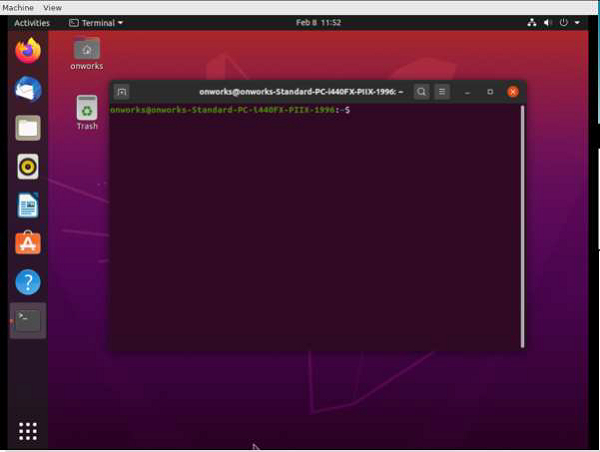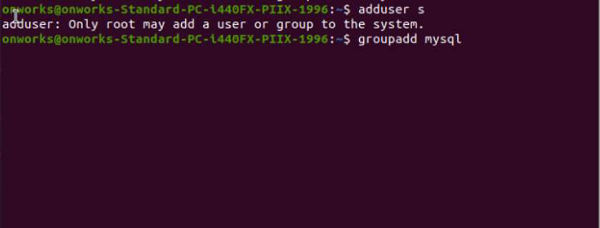Install MySQL on Unix/Linux using universal binaries
Oracle ships with a set of binary distributions of MySQL. This includes universal binary distributions in the form of compressed tar files (files with a .tar.xz extension) for many platforms, as well as binaries in the platform-specific package format for specific platforms.
The name format of the MySQL compressed tar file binary distribution is "mysql-VERSION-OS.tar.xz", where VERSION refers to the number and OS represents the type of operating system that needs to use the distribution.
To install a compressed tar file binary distribution, the installation needs to be extracted to a location of user choice. A debug version of the mysqld binary is available as mysqld-debug.
If you need to compile MySQL from a source distribution with your own debug build, you need to use the appropriate configuration options.
To install and use the MySQL binary distribution, you need to use the command sequence shown below -
shell> groupadd mysql shell> useradd −r −g mysql −s /bin/false mysql shell> cd /usr/local shell> tar xvf /path/to/mysql−VERSION−OS.tar.xz shell> ln −s full−path−to−mysql−VERSION−OS mysql shell> cd mysql shell> mkdir mysql−files shell> chown mysql:mysql mysql−files shell> chmod 750 mysql−files shell> bin/mysqld −−initialize −−user=mysql shell> bin/mysql_ssl_rsa_setup shell> bin/mysqld_safe −−user=mysql & # Below command is optional shell> cp support−files/mysql.server /etc/init.d/mysql.server

The above assumes that the user has root (administration) on their system members) access rights.

The mysql-files directory provides a simple location to use as the value of the secure_file_priv system variable. This limits import and export operations to specific directories. See Section 5.1.8, “Server System Variables”.
The steps are briefly described as follows -
Create mysql users and groups. This can be done using the following commands -
shell> groupadd mysql shell> useradd −r −g mysql −s /bin/false mysql
Get and unzip the distribution. This can be done using the following command -
shell> cd /usr/local
Unzip the distribution, this will create the installation directory. If "tar" has "z" option support, the distribution can be unpacked and decompressed. This can be done using the following command -
shell> tar xvf /path/to/mysql−VERSION−OS.tar.xz
tar command creates a directory called mysql−VERSION-OS
tar command can be replaced with the following command to unzip and extract the distribution-
shell> xz −dc /path/to/mysql−VERSION−OS.tar.xz | tar x
Can create a symbolic link to the installation directory created by tar -
shell> ln −s full−path−to−mysql−VERSION−OS mysql
The "ln" command creates a symbolic link to the installation directory. This enables users to more easily reference the /usr/local/mysql directory. The /usr/local/mysql/bin directory can be added to the user's PATH variable using the following command -
shell> export PATH=$PATH:/usr/local/mysql/bin
The above is the detailed content of Install MySQL on Unix/Linux using universal binaries. For more information, please follow other related articles on the PHP Chinese website!

Hot AI Tools

Undresser.AI Undress
AI-powered app for creating realistic nude photos

AI Clothes Remover
Online AI tool for removing clothes from photos.

Undress AI Tool
Undress images for free

Clothoff.io
AI clothes remover

AI Hentai Generator
Generate AI Hentai for free.

Hot Article

Hot Tools

Notepad++7.3.1
Easy-to-use and free code editor

SublimeText3 Chinese version
Chinese version, very easy to use

Zend Studio 13.0.1
Powerful PHP integrated development environment

Dreamweaver CS6
Visual web development tools

SublimeText3 Mac version
God-level code editing software (SublimeText3)

Hot Topics
 How do you alter a table in MySQL using the ALTER TABLE statement?
Mar 19, 2025 pm 03:51 PM
How do you alter a table in MySQL using the ALTER TABLE statement?
Mar 19, 2025 pm 03:51 PM
The article discusses using MySQL's ALTER TABLE statement to modify tables, including adding/dropping columns, renaming tables/columns, and changing column data types.
 How do I configure SSL/TLS encryption for MySQL connections?
Mar 18, 2025 pm 12:01 PM
How do I configure SSL/TLS encryption for MySQL connections?
Mar 18, 2025 pm 12:01 PM
Article discusses configuring SSL/TLS encryption for MySQL, including certificate generation and verification. Main issue is using self-signed certificates' security implications.[Character count: 159]
 How do you handle large datasets in MySQL?
Mar 21, 2025 pm 12:15 PM
How do you handle large datasets in MySQL?
Mar 21, 2025 pm 12:15 PM
Article discusses strategies for handling large datasets in MySQL, including partitioning, sharding, indexing, and query optimization.
 What are some popular MySQL GUI tools (e.g., MySQL Workbench, phpMyAdmin)?
Mar 21, 2025 pm 06:28 PM
What are some popular MySQL GUI tools (e.g., MySQL Workbench, phpMyAdmin)?
Mar 21, 2025 pm 06:28 PM
Article discusses popular MySQL GUI tools like MySQL Workbench and phpMyAdmin, comparing their features and suitability for beginners and advanced users.[159 characters]
 How do you drop a table in MySQL using the DROP TABLE statement?
Mar 19, 2025 pm 03:52 PM
How do you drop a table in MySQL using the DROP TABLE statement?
Mar 19, 2025 pm 03:52 PM
The article discusses dropping tables in MySQL using the DROP TABLE statement, emphasizing precautions and risks. It highlights that the action is irreversible without backups, detailing recovery methods and potential production environment hazards.
 How do you represent relationships using foreign keys?
Mar 19, 2025 pm 03:48 PM
How do you represent relationships using foreign keys?
Mar 19, 2025 pm 03:48 PM
Article discusses using foreign keys to represent relationships in databases, focusing on best practices, data integrity, and common pitfalls to avoid.
 How do you create indexes on JSON columns?
Mar 21, 2025 pm 12:13 PM
How do you create indexes on JSON columns?
Mar 21, 2025 pm 12:13 PM
The article discusses creating indexes on JSON columns in various databases like PostgreSQL, MySQL, and MongoDB to enhance query performance. It explains the syntax and benefits of indexing specific JSON paths, and lists supported database systems.
 How do I secure MySQL against common vulnerabilities (SQL injection, brute-force attacks)?
Mar 18, 2025 pm 12:00 PM
How do I secure MySQL against common vulnerabilities (SQL injection, brute-force attacks)?
Mar 18, 2025 pm 12:00 PM
Article discusses securing MySQL against SQL injection and brute-force attacks using prepared statements, input validation, and strong password policies.(159 characters)






